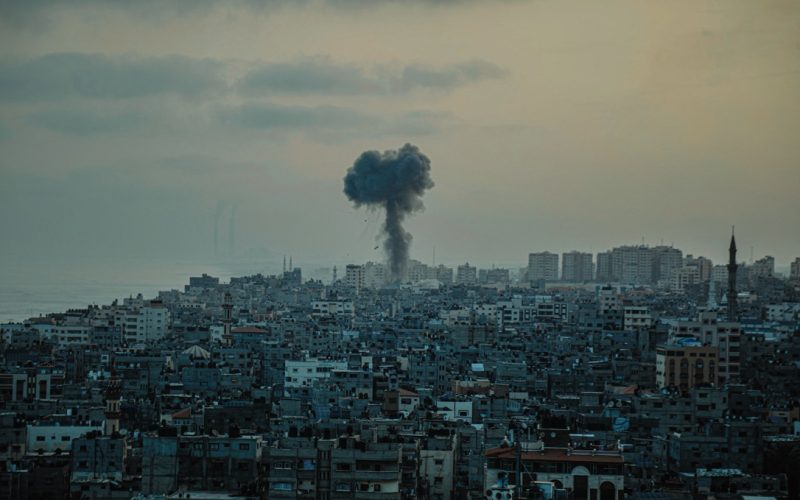Table of Contents Show
Introduction: A Land of Contrasts
Lebanon is a country where the echoes of ancient civilizations resonate through its bustling streets, from the ruins of Baalbek to the vibrant neighborhoods of Beirut. It is a place where religious sects coexist—often uneasily—against a backdrop of stunning landscapes and a rich cultural heritage. Yet, over the decades, Lebanon has also become synonymous with violence, conflict, and political turmoil. Central to this tumultuous narrative is Hezbollah, a group that has transformed from a local resistance movement into a formidable political and military force, shaping the fate of Lebanon and influencing regional geopolitics.
In this investigative exploration, we will delve into the history of Lebanon, examining the rise of Hezbollah, its ideological foundations, and its impact on the country and the broader Middle East.
Historical Context: Lebanon’s Fragile Foundations
To understand the rise of Hezbollah, we must first contextualize Lebanon’s unique historical and political landscape. Established as a modern state in 1920 under French mandate, Lebanon’s political framework was designed to accommodate its diverse religious communities—primarily Christians, Sunni Muslims, and Shia Muslims. This confessional system, where political power is distributed among different sects, created an inherently fragile balance.
Lebanon’s civil war (1975-1990) marked a pivotal moment in its history. Rooted in sectarian tensions, socio-economic disparities, and external influences, the war pitted various factions against each other, leading to widespread violence and destruction. The Lebanese Armed Forces fractured, and militia groups emerged, each representing different sectarian interests. Among these factions, Hezbollah was born.
The Birth of Hezbollah: Resistance and Ideology
Hezbollah, meaning “Party of God,” emerged in the early 1980s during the Israeli invasion of Lebanon. Founded by a group of Shia clerics and activists, it was initially a response to the Israeli occupation and the plight of the Shia community, which had long been marginalized in Lebanese society. The group was inspired by the Iranian Revolution of 1979 and sought to establish an Islamic state in Lebanon, influenced by the teachings of Ayatollah Khomeini.
At its core, Hezbollah was built on a dual foundation of resistance and ideology. The group positioned itself as a defender of the Lebanese people against Israeli aggression and Western imperialism. The 1983 U.S. embassy bombing and the subsequent barracks bombing that killed 241 U.S. servicemen underscored Hezbollah’s capacity for violence and its determination to resist foreign intervention.
As Hezbollah’s reputation grew, so too did its support base, particularly among Lebanon’s Shia population. The group established social services, including schools, hospitals, and welfare programs, which endeared it to many in the impoverished Shia communities. This social infrastructure helped Hezbollah solidify its position as a political and military force.
The 2006 War: A Defining Moment
The 2006 Lebanon War marked a significant turning point in Hezbollah’s trajectory and its relationship with Lebanon and the wider region. Triggered by the abduction of two Israeli soldiers by Hezbollah, the conflict lasted 34 days and resulted in widespread destruction across Lebanon. The war ended with a United Nations-brokered ceasefire, but it left a lasting impact on the Lebanese landscape.
From a military standpoint, Hezbollah emerged from the war with enhanced credibility. Its ability to withstand a powerful Israeli military onslaught galvanized support among its base and positioned the group as a hero in the eyes of many Arab populations. However, the conflict also exacerbated Lebanon’s political divisions. Critics accused Hezbollah of prioritizing its military ambitions over the well-being of the Lebanese people, leading to further polarization in a country already fraught with sectarian tensions.
Hezbollah’s Political Ascendancy: A Shift in Strategy
In the years following the 2006 war, Hezbollah’s strategy evolved. Recognizing the need to engage politically, the group sought to gain a foothold in Lebanon’s political system. In 2005, following the assassination of former Prime Minister Rafik Hariri, Hezbollah capitalized on the growing anti-Syrian sentiment in the country. The group’s political wing participated in parliamentary elections and gained significant representation, reflecting its growing influence within Lebanese society.
Hezbollah’s dual role as a political party and a militant group has been a source of contention within Lebanon. Supporters argue that the group’s military capabilities are essential for national defense, particularly against Israeli threats. Critics contend that Hezbollah’s armed status undermines the authority of the Lebanese state and perpetuates a cycle of violence and instability.
The dynamics within Lebanon shifted again in 2019 when widespread protests erupted against the ruling political class, which many Lebanese citizens viewed as corrupt and ineffective. Hezbollah, often seen as part of this ruling elite, faced significant backlash. Protesters accused the group of contributing to Lebanon’s economic collapse and called for a complete overhaul of the political system.
The Economic Crisis: Hezbollah’s Dilemma
As Lebanon plunged into an unprecedented economic crisis in 2019, Hezbollah found itself at a crossroads. The country faced a financial meltdown characterized by skyrocketing inflation, skyrocketing unemployment, and a plummeting currency. The economic crisis further fueled public anger toward the political establishment, with Hezbollah often viewed as part of the problem rather than the solution.
Despite its vast social services network, Hezbollah struggled to alleviate the suffering of its constituents amid the economic turmoil. As basic goods became scarce and livelihoods vanished, discontent grew, and some began to question Hezbollah’s ability to govern effectively. The group attempted to navigate the crisis by blaming external actors—such as the United States and Israel—for Lebanon’s woes while positioning itself as a protector of the nation’s sovereignty.
The Regional Dimension: Hezbollah’s Role in Iran’s Proxy Network
Hezbollah’s influence extends far beyond Lebanon’s borders. It serves as a key player in Iran’s broader strategy in the Middle East, acting as a proxy force in conflicts across the region. Iran provides Hezbollah with funding, military training, and advanced weaponry, allowing the group to expand its operations beyond Lebanon.
In Syria, Hezbollah played a crucial role in supporting the Assad regime during the ongoing civil war. The group’s involvement not only solidified its ties to Iran but also demonstrated its willingness to project power beyond Lebanon’s borders. This expansion raised concerns among regional adversaries, particularly Israel, which views Hezbollah as a direct threat to its national security.
The group’s activities have also drawn the ire of Gulf Arab states, particularly Saudi Arabia, which sees Hezbollah as a destabilizing force in the region. As tensions between Iran and Saudi Arabia escalate, Lebanon has become a battleground for competing regional interests, with Hezbollah at the center of this geopolitical chess game.
Conclusion: The Future of Hezbollah and Lebanon
As we reflect on the intricate relationship between Lebanon and Hezbollah, we are reminded that the narrative is not merely one of conflict and violence but also of resilience and identity. Lebanon is a country marked by its historical complexities, and Hezbollah has become an integral part of its political fabric.
The future of Lebanon remains uncertain. The economic crisis has led to widespread disillusionment with the political elite, and the potential for renewed sectarian tensions looms large. Hezbollah’s dual identity as a political party and militant group poses challenges for Lebanon’s sovereignty and stability. As the country grapples with its identity, Hezbollah’s role as a defender of the Shia community and a key player in regional geopolitics will undoubtedly shape Lebanon’s trajectory.
In the end, understanding Lebanon’s history with Hezbollah is crucial to comprehending the complexities of the Middle East. It is a tale of resistance, resilience, and the enduring quest for identity in a land torn by conflict. As Lebanon stands at a crossroads, the choices made by its leaders, including those within Hezbollah, will determine the nation’s future and its place in the ever-evolving landscape of the region.




